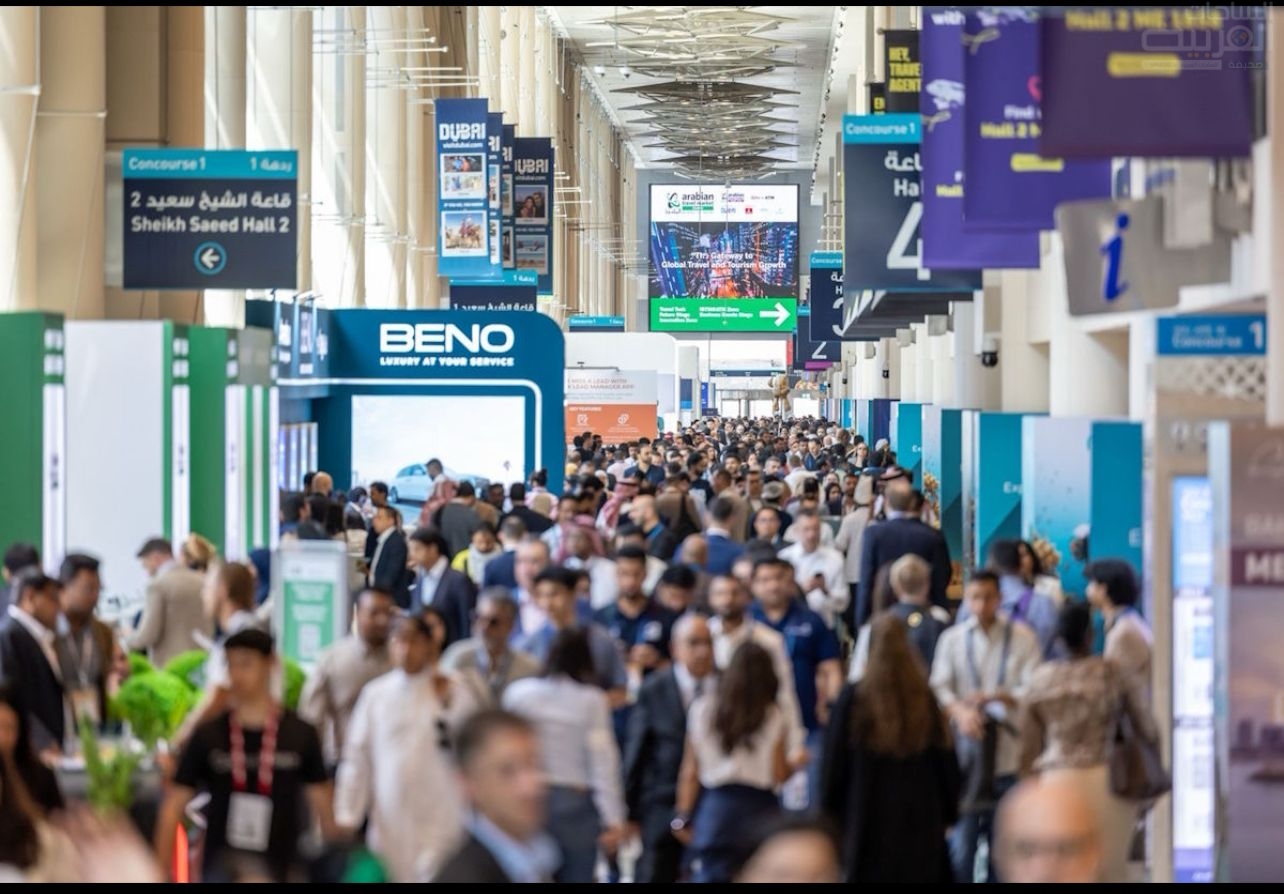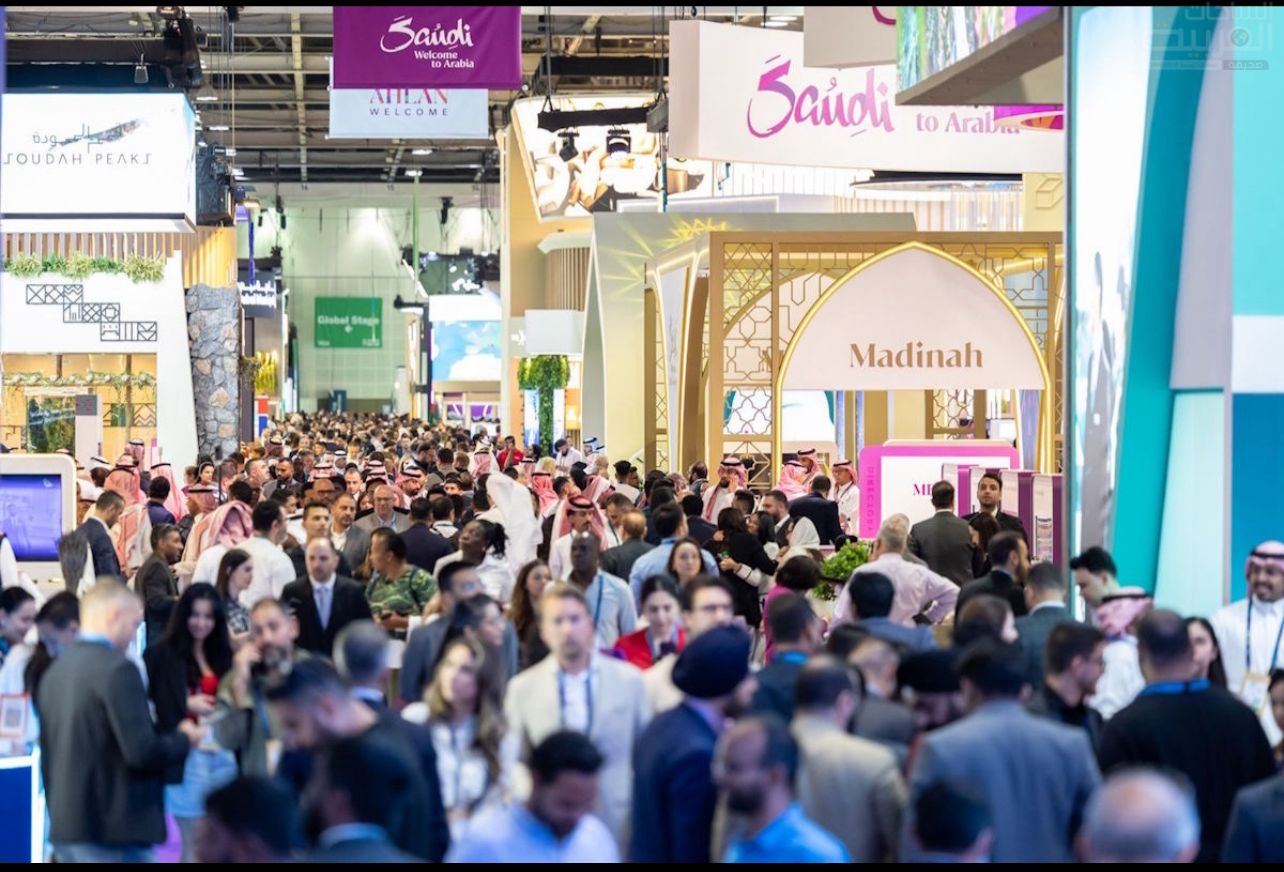د. أشواق الحربي
يتوقع تقرير اتجاهات السفر الصادر عن معرض سوق السفر العربي 2025، والذي أعدته سوق السفر العربي بالشراكة مع توريزم إيكونوميكس، أن يرتفع الإنفاق على السفر في الشرق الأوسط بنسبة 50% بحلول عام 2030.
• ووفقًا للتقرير، سيزداد السفر الوافد إلى المنطقة بنسبة 13% سنويًا بين عامي 2025 و2030، وتشمل أسواقها الرئيسية آسيا وأفريقيا.
• كما يشهد سفر الأعمال والسفر الفاخر ارتفاعًا ملحوظًا، حيث أصبح الشرق الأوسط مركزًا عالميًا رئيسيًا لقطاع الرياضة والترفيه
دبي، الإمارات العربية المتحدة، 03 يونيو 2025: يتوقع تقرير جديد أعدته ” توريزم إيكونوميكس” بالنيابة عن معرض سوق السفر العربي أن يرتفع إجمالي الإنفاق السياحي في الشرق الأوسط بنسبة 50% بحلول عام 2030 مقارنةً بعام 2024، مما سيُولّد إنفاقًا يقارب 350 مليار دولار أمريكي.
كما يكشف تقرير اتجاهات السفر الصادر عن سوق السفر العربي 2025 عن رؤىً ثاقبة حول التوجهات والتحولات التي تُعيد تعريف قطاع السفر في الشرق الأوسط والعالم، بما في ذلك الطفرة في سفر الأعمال، ونمو قطاع السياحة الفاخرة، وازدهار السياحة الرياضية الإقليمية، حيث يُسلّط التقرير الضوء على النمو الاستثنائي في إنفاق السفر في الشرق الأوسط، والذي من المتوقع أن يتجاوز مستويات عام 2019 بنسبة 54% هذا العام، ويتوقع معدل نمو سنوي يتجاوز 7% بين عامي 2025 و2030.
وبهذه المناسبة قالت دانييل كورتيس، مديرة معرض سوق السفر العربي في الشرق الأوسط: “تؤكد نتائج التقرير أن نمو قطاع السفر في الشرق الأوسط قويٌّ للغاية، حيث يتجاوز متوسط النمو السنوي 7% حتى عام 2030. وتُعد الرؤى الوطنية الجريئة، والتطورات الرائدة، وتعزيز التواصل، من العوامل الرئيسية التي تُعزز هذا الزخم.”
وتأكيدًا على المكانة القوية التي تتمتع بها منطقة الشرق الأوسط في السياحة العالمية، فمن المتوقع أن ينمو السفر الداخلي من خارج المنطقة بنسبة 13% سنويًا حتى عام 2030، ومن المتوقع أيضاً أن يرتفع سفر الأعمال الخارجي بنسبة 9% سنويًا.
هذا توُشكّل أسواق السياحة الأوروبية المصدرة 50% من إجمالي رحلات الترفيه إلى الشرق الأوسط، وتُعدّ الهند والمملكة المتحدة أكبر سوقين دوليين مصدرين للسياح الوافدين، كما تُعدّ الصين سوقًا بالغة الأهمية، حيث تحتل المرتبة الثالثة من حيث القيمة، حيث من المتوقع أن يزداد الإنفاق الترفيهي بنسبة 130% بحلول عام 2030. علاوة على ذلك، فإنه من المتوقع أن تزداد الليالي السياحية للزوار من منطقة آسيا والمحيط الهادئ وأفريقيا بأكثر من 100% بين الآن وعام 2030.
أما بالنسبة للسفر الخارجي، تُهيمن المملكة العربية السعودية ومصر على التدفقات الإقليمية، بينما تتصدر تايلاند والمملكة المتحدة قائمة الوجهات السياحية المفضلة لمسافات طويلة.
وقد قدمت أكبر أربع شركات طيران في المنطقة – طيران الإمارات، والاتحاد للطيران، والخطوط الجوية القطرية، والخطوط الجوية العربية السعودية ما يقرب من 780 طلبية لشراء طائرات من بوينغ وإيرباص، مما يمثل توسعات كبيرة في أساطيلها الحالية، إذ يؤكد هذا الاستثمار الكبير على التركيز الاستراتيجي للمنطقة على أن تصبح مركزًا عالميًا للطيران وتلبية الطلب المتزايد على المسافرين خلال العقد المقبل.
هذا ويلعب قطاع سفر الأعمال دورًا حيويًا في تعزيز سمعة المنطقة في استضافة الفعاليات الكبرى، ومن المتوقع أن يشهد ثاني أسرع معدل نمو في سفر الأعمال بين جميع مناطق العالم، مما يؤكد تزايد إمكانات الجمع بين سفر الأعمال والترفيه، أو ما يُعرف بـ”السفر الترفيهي”.
وأضافت كورتيس قائلة: “في معرض سوق السفر العربي 2025، أدركنا شغف القطاع بالابتكار في تقنيات السفر، بالإضافة إلى الطلب المتزايد على سفر الأعمال في المنطقة. واستجابةً لذلك، أطلقنا فعاليتين جديدتين، هما IBTM@ATM ومنطقة الابتكار، المصممتين لتمكين جمهورنا المتنامي من صياغة مستقبل السفر بالسرعة والحجم اللذين يلبيان متطلبات قطاعنا المتنامية”.
وتشهد المنطقة أيضًا نموًا غير مسبوق في السياحة الفاخرة وسياحة نمط الحياة، ما يجذب جيلًا جديدًا من المسافرين الأثرياء، الذين ينجذبون إلى الضيافة الاستثنائية في الشرق الأوسط، والتجارب المُصممة بعناية، والفعاليات الثقافية المرموقة، ووفقًا للتقرير فإنه من المتوقع أن يستمر الإنفاق العالمي على الضيافة الترفيهية الفاخرة في النمو بوتيرة متسارعة ليصل إلى أكثر من 390 مليار دولار أمريكي بحلول عام 2028.
ومن بين أكثر من 170 فندقًا فاخرًا في الشرق الأوسط، يوجد ما يقرب من 100 فندق في أبوظبي ودبي، منها 22 فندقًا قيد التطوير حاليًا. ومع وجود العديد من الفنادق الفاخرة قيد التطوير ضمن مشاريع جيجا في المملكة العربية السعودية، ستواصل المنطقة كونها وجهة مفضلة للمسافرين الباحثين عن الرفاهية والترفيه.
وعلى خطى كأس العالم قطر 2022 ومعرض إكسبو دبي 2020، تتمتع منطقة الشرق الأوسط بسجل حافل في استضافة فعاليات ترفيهية ورياضية رفيعة المستوى بنجاح. ووفقًا لتقرير اتجاهات السفر الصادر عن سوق السفر العربي، فإن الإقبال القوي على السياحة الرياضية في المنطقة سيؤدي إلى معدل نمو محتمل بنسبة 63% في السنوات القادمة، ومن المتوقع أن يواصل كأس العالم لكرة القدم 2034 في المملكة العربية السعودية هذا الزخم.
ووفقًا للتقرير، تستفيد رياضات الجولف، ورياضة السيارات، وكرة القدم، وركوب الدراجات، والرياضات الإلكترونية من ازدياد الاهتمام والاستثمار في المنطقة، حيث يعزز هذا النمو في الفعاليات الرياضية والترفيهية قطاع السفر بشكل كبير، مما يؤدي إلى زيادة الطلب على الإقامات الفندقية والرحلات الجوية والخدمات ذات الصلة، مما يُحدث تأثيرًا مضاعفًا يدعم نموًا سياحيًا أوسع.
هذا ويُعدّ معرض سوق السفر العربي، الحدث الدولي الرائد في مجال السفر والسياحة، والذي يُعقد سنويًا في دبي. ويلعب دورًا محوريًا في رسم ملامح مستقبل السفر العالمي. وقد استقطبت نسخة عام 2025، التي أُقيمت في مركز دبي التجاري العالمي، أكثر من 55,000 متخصص في هذا القطاع من 166 دولة، محققةً نموًا سنويًا بنسبة 16%. وستُعقد النسخة القادمة في الفترة الممتدة من 4 إلى 7 مايو 2026.
Tourism spending in the Middle East is projected to reach US$350 billion by 2030, according to a new travel industry report
• The ATM Travel Trends Report 2025, developed by Arabian Travel Market in partnership with Tourism Economics, predicts that travel spending in the Middle East will be 50% higher by 2030
• According to the report, inbound travel to the region will increase by 13% annually from 2025 to 2030, with key source markets including Asia and Africa
• Business travel and luxury travel are also on the rise, as the Middle East becomes a key global hub for sports and entertainment
Dubai, United Arab Emirates, 3 June 2025: A new report compiled by Tourism Economics on behalf of Arabian Travel Market (ATM) predicts that by 2030, total tourism spend in the Middle East will be 50% higher than in 2024, generating expenditure of nearly US$350 billion.
The ATM Travel Trends Report 2025 reveals insights into the trends and transformations redefining the travel sector in the Middle East and worldwide, including the surge of business travel, the growth of the luxury segment, and the boom in regional sports tourism. The report highlights exceptional growth in Middle East travel spending, projected to exceed 2019 levels by 54% this year and anticipates an annual growth rate of over 7% from 2025 to 2030.
Danielle Curtis, Exhibition Director ME, Arabian Travel Market, said: “The report’s findings confirm that travel growth in the Middle East is incredibly strong, with annual growth averaging more than 7% through 2030. Bold national visions, game-changing developments, and enhanced connectivity are some of the key factors driving this momentum.”
Underscoring the Middle East’s strong position in global tourism, inbound travel from outside the region is set to grow by 13% annually up to 2030 and outbound business travel forecast to surge at 9% per year.
European source markets make up 50% of all leisure travel to the Middle East, with India and the United Kingdom the top two inbound international leisure source markets. China is also a critical market, ranking third by value with leisure spend expected to increase by 130% by 2030. Furthermore, tourism nights by visitors from Asia Pacific and Africa, are expected to increase by over 100% between now and 2030.
For outbound travel, Saudi Arabia and Egypt dominate regional flows, while Thailand and the United Kingdom lead as preferred long-haul destinations.
The four largest airlines in the region – Emirates, Etihad Airways, Qatar Airways and Saudia – have placed nearly 780 aircraft orders with Boeing and Airbus, representing major expansions to their existing fleets. This significant investment underscores the region’s strategic focus on becoming a global aviation hub and meeting rising passenger demand over the coming decade.
The Middle East’s rise as a global hub for business events is another key highlight of the report, which states that spending on Middle East business travel will grow 1.5 times faster than the global average through to 2030. The region’s strategic location at the centre of Asia, Africa, and Europe supports business and leisure travel, with the latter on a particularly strong trajectory for growth.
The sector plays a vital role in developing the region’s reputation for hosting major events. It is expected to experience the second-fastest rate of business travel growth among all global regions, underscoring the increased potential for combining business and leisure travel, or ‘bleisure’.
Curtis commented: “At ATM 2025, we recognised the industry’s hunger for innovation in travel technology as well as the rising demand for business travel across the region. In response, we launched two dynamic new zones, IBTM@ATM and the Innovation Zone, designed to empower our growing audience to shape the future of travel with the speed and scale our exciting industry demands.”
The region is also witnessing unprecedented growth in luxury and lifestyle tourism, attracting a new generation of high-net-worth travellers, drawn to exceptional Middle East hospitality, curated experiences and premium cultural events. According to the report global spending on luxury leisure hospitality is expected to continue growing briskly reaching over US$390 billion by 2028.
“Travellers drawn to the Middle East tend to spend more on travel overall, nearly 60% habitually spending on luxury experiences while travelling compared to under 40% among travellers who favour other destinations,” added Curtis.
Of the more than 170 luxury hotel properties in the Middle East, nearly 100 are situated Abu Dhabi and Dubai, with 22 currently in development. With several luxury properties in the pipeline among Saudi Arabia’s Giga projects, the region will continue to serve as a preferred destination for luxury and leisure travellers.
Following in the footsteps of the Qatar 2022 World Cup and Dubai Expo 2020, the Middle East region has a proven track record for successfully hosting high-profile entertainment and sports events. According to the ATM Travel Trends report, the strong appetite for sports tourism in the region will lead to a potential growth rate of 63% in the coming years, with the 2034 FIFA World Cup in Saudi Arabia set to continue this momentum.
According to the report, golf, motorsports, football, cycling, and esports are all benefiting from heightened visibility and investment in the region. This surge in sporting and entertainment events is significantly boosting the travel industry, driving increased demand for hotel stays, flights, and related services, creating a ripple effect that supports broader tourism growth.
ATM is the leading international travel and tourism event held annually in Dubai. It plays a vital role in shaping the future of global travel. Held at the Dubai World Trade Centre, the 2025 edition welcomed over 55,000 industry professionals from 166 countries, achieving year-on-year growth of 16%. The next edition will take place from 4-7 May 2026.


